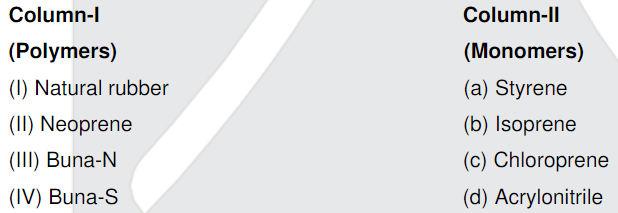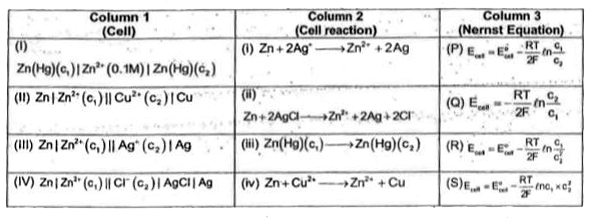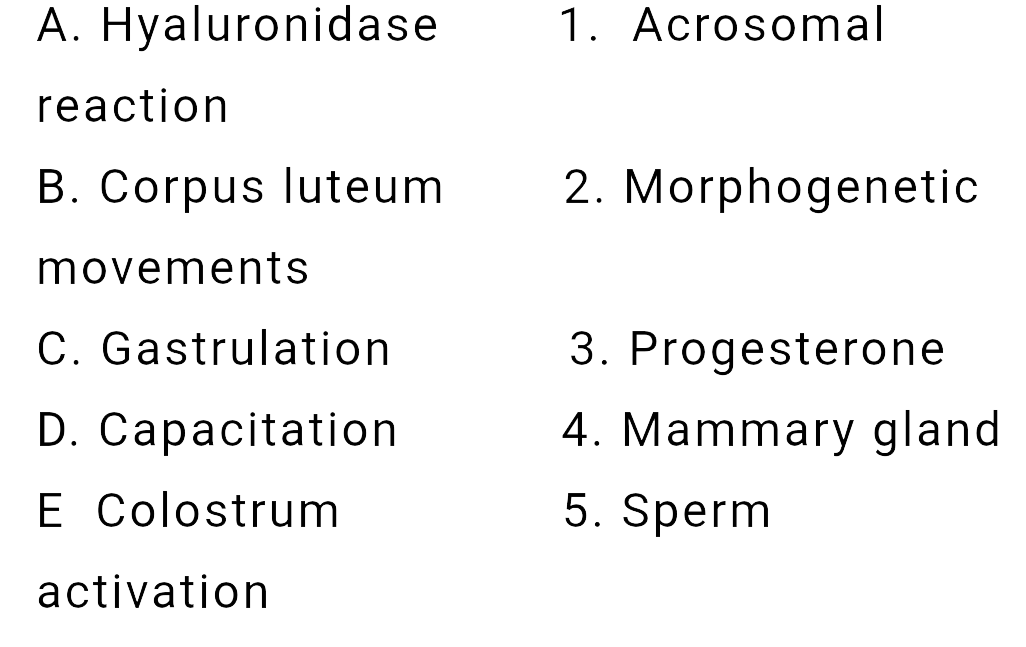In which of the following both pairs have correct combination?
Gaseous nutrient cycleSulphur and PhosphorusSedimentary nutrient cycleCarbon and Nitrogen
Gaseous nutrient cycleSedimentary nutrient cycleCarbon and NitrogenSulphur and Phosphorus
Gaseous nutrient cycleCarbon and SulphurSedimentary nutrient cycleNitrogen and Phosphorus
Gaseous nutrient cycleNitrogen and SulphurSedimentary nutrient cycleCarbon and Phosphorus
The correct Answer is:B
To solve the question about which pairs have the correct combination of nutrient cycles and their corresponding elements, we can follow these steps:
1. Understand Nutrient Cycles:
- There are two main types of nutrient cycles:
- Gaseous Nutrient Cycles: These involve the exchange of nutrients between the atmosphere and living organisms.
- Sedimentary Nutrient Cycles: These involve the exchange of nutrients from the Earth's crust (lithosphere) to living organisms.
2. Identify Elements Associated with Each Cycle:
- Gaseous Nutrient Cycles:
- Common examples include Carbon and Nitrogen.
- Sedimentary Nutrient Cycles:
- Common examples include Sulfur and Phosphorus.
3. Match Elements with Their Correct Cycle:
- For Gaseous Nutrient Cycles:
- Carbon → Gaseous Cycle
- Nitrogen → Gaseous Cycle
- For Sedimentary Nutrient Cycles:
- Sulfur → Sedimentary Cycle
- Phosphorus → Sedimentary Cycle
4. Determine the Correct Combinations:
- Based on the above identification:
- Gaseous Nutrient Cycle: Carbon and Nitrogen (Correct)
- Sedimentary Nutrient Cycle: Sulfur and Phosphorus (Correct)
5. Conclusion:
- Both pairs have the correct combinations. Therefore, the correct answer to the question is the second option.
Final Answer:
The correct answer is the second option, where both pairs have the correct combination:
- Gaseous Nutrient Cycle: Carbon and Nitrogen
- Sedimentary Nutrient Cycle: Sulfur and Phosphorus
---
- There are two main types of nutrient cycles:
- Gaseous Nutrient Cycles: These involve the exchange of nutrients between the atmosphere and living organisms.
- Sedimentary Nutrient Cycles: These involve the exchange of nutrients from the Earth's crust (lithosphere) to living organisms.
- Gaseous Nutrient Cycles:
- Common examples include Carbon and Nitrogen.
- Sedimentary Nutrient Cycles:
- Common examples include Sulfur and Phosphorus.
- For Gaseous Nutrient Cycles:
- Carbon → Gaseous Cycle
- Nitrogen → Gaseous Cycle
- For Sedimentary Nutrient Cycles:
- Sulfur → Sedimentary Cycle
- Phosphorus → Sedimentary Cycle
- Based on the above identification:
- Gaseous Nutrient Cycle: Carbon and Nitrogen (Correct)
- Sedimentary Nutrient Cycle: Sulfur and Phosphorus (Correct)
- Both pairs have the correct combinations. Therefore, the correct answer to the question is the second option.
The correct answer is the second option, where both pairs have the correct combination:
- Gaseous Nutrient Cycle: Carbon and Nitrogen
- Sedimentary Nutrient Cycle: Sulfur and Phosphorus
Topper's Solved these Questions
- ECOSYSTEMBOOK - CENGAGE BIOLOGY ENGLISHCHAPTER - ECOSYSTEMEXERCISE - ARCHIVES (CHOOSE THE CORRECT OPTION)
41 Videos
- BODY FLUIDS AND CIRCULATIONS BOOK - CENGAGE BIOLOGY ENGLISHCHAPTER - BODY FLUIDS AND CIRCULATIONS EXERCISE - ARCHIVES (Choose the correct option)
30 Videos
- ENVIRONMENTAL ISSUESBOOK - CENGAGE BIOLOGY ENGLISHCHAPTER - ENVIRONMENTAL ISSUESEXERCISE - ARCHIVES
45 Videos
Similar Questions
Knowledge Check
Which of the following pairs is not correct?
AE. Haecker−coined the term ,EcologyBTansley−Coined the term 'EcosystemCR. Mishra−Father of indian EcologyDNone of theseWhich of the following pairs is not correct?
AE. Haecker−coined the term ,EcologyBTansley−Coined the term 'EcosystemCR. Mishra−Father of indian EcologyDNone of these


Which of the following combination is correct ?
View Solution
Which of the following combination is correct:
View Solution
Which of the following combination is correct:
View Solution
Which of the following combination is correct?
View Solution
Which of the following combination is correct?
View Solution
Which of the following is the only correct combination for Lyman series ?
View Solution

